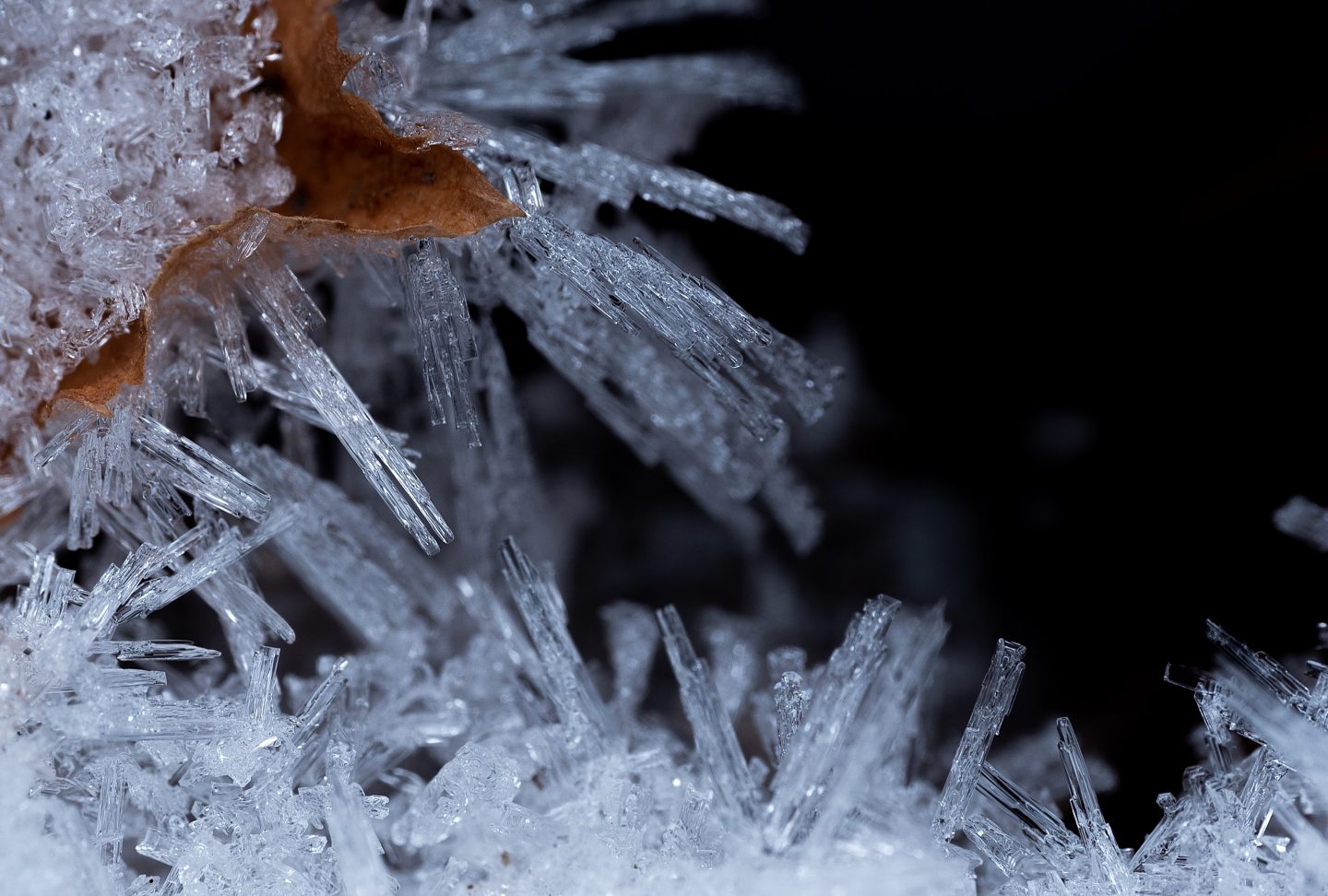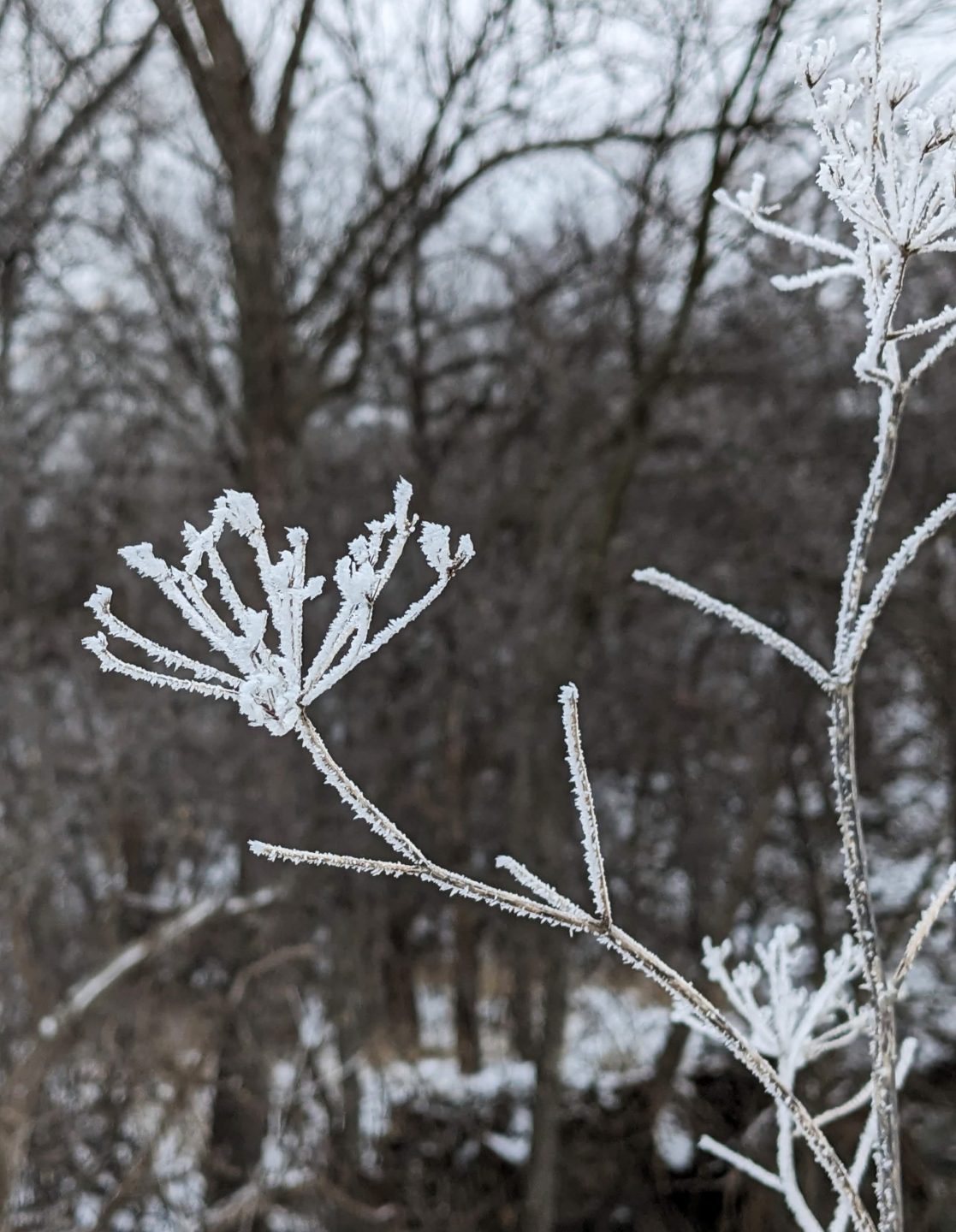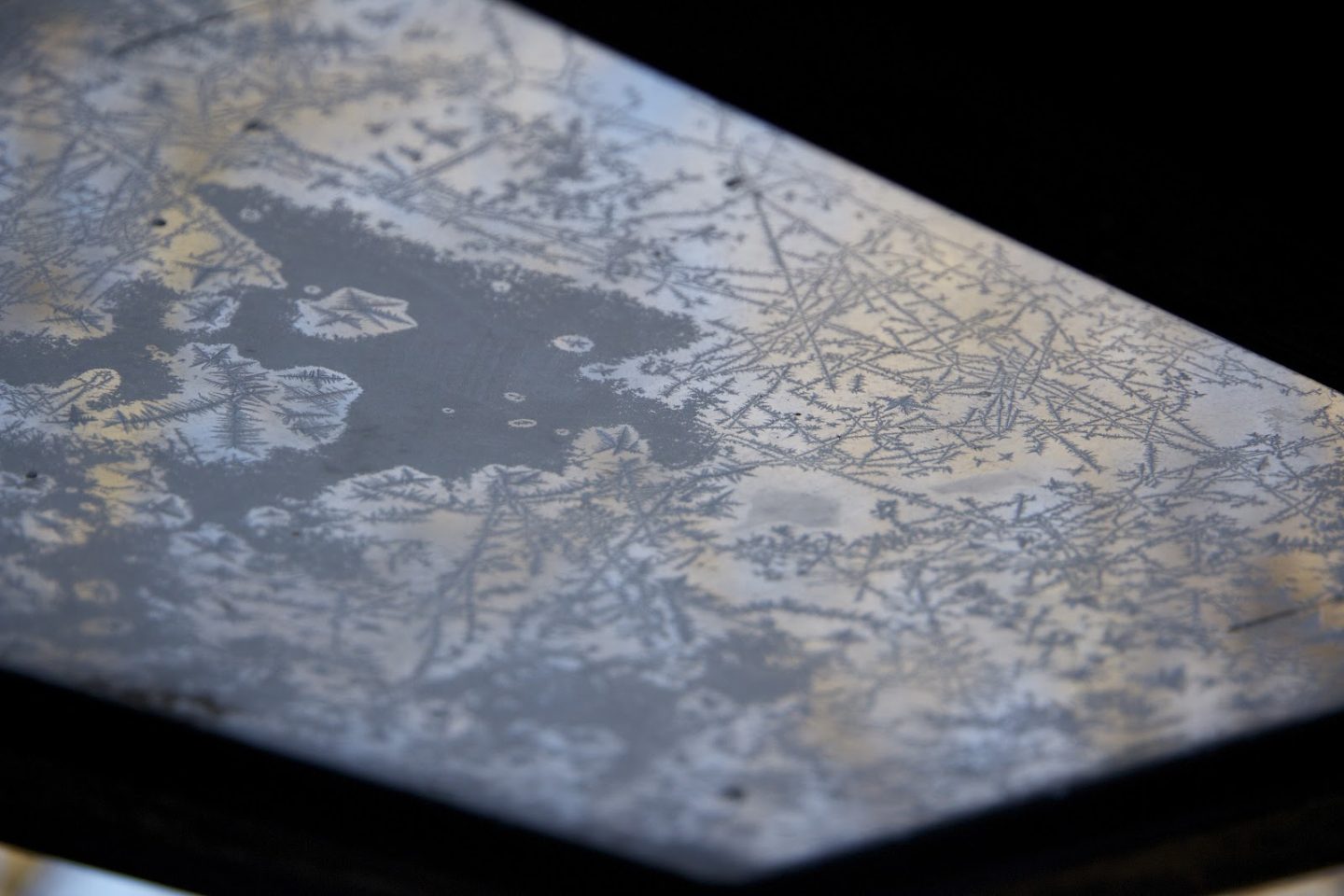
By Brianna Nugent, Community Science Program Manager
As a hobby macro photographer and a lover of the cold, I thrive in shimmering landscapes covered in frost. But it wasn’t until I started getting up close and personal with frost through photography that I realized its magic. Following the right conditions, coming upon big bluestem heavy with delicate hoarfrost or oak trees coated in rime ice is a photographer’s dream. This fascination led me to do more research, which I’d like to share with you.
Hoarfrost or Rime Ice?
At a glance, hoarfrost and rime ice look almost identical. One of the key differences is what meteorological conditions existed at the time the frost was formed. Hoarfrost forms when water vapor in the air bypasses the liquid stage and directly deposits as ice crystals on exposed surfaces. This phenomenon typically occurs on crystal clear, cold winter nights when the air is moist. The end result is a crystalline, feathery coating that can adorn everything from tree branches to fence posts, transforming the landscape into a shimmering wonderland.

Rime ice requires more extreme weather conditions, when fog is thick and the wind is howling through the dormant trees and across the sleeping prairies. Supercooled water droplets, water droplets that are below freezing yet still in a liquid form, freeze instantly when they come in contact with any object at or below freezing. There are two types of rime ice: hard rime and soft rime. Hard rime is dense, completely encasing trees and weighing down their branches. Soft rime is more delicate and lighter, giving the appearance of freshly fallen snow.
Black Frost
Also known as “dry freeze,” black frost happens when the temperature drops so low that moisture in the air freezes instantly upon contact with surfaces without forming visible ice. This type of frost can be particularly damaging to plants, as it can freeze plant tissues without any visible warning signs, leading to sudden and severe frost damage. This intense, sudden freezing kills the affected plants and turns them black, hence the name. Black frost can create a grim scene to any gardener’s flower beds.
Window Frost
Also known as fern frost, this frost phenomenon occurs when humid indoor air comes into contact with a cold windowpane. The moisture in the air freezes into detailed patterns, often resembling ferns or feathers. This type of frost can create stunning, natural artwork on windows during winter, adding a touch of nature’s artistry in our own homes.

Whether it’s the delicate fern-like patterns on your window or the feathery crystals on a fence post, frost brings a touch of magic to the winter season, reminding us of nature’s artistry.
